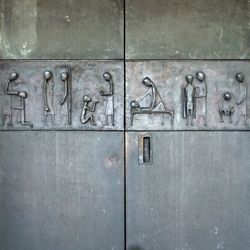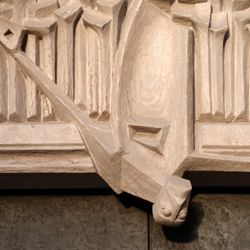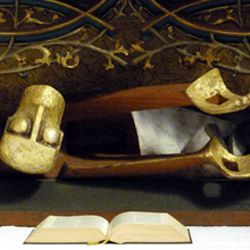Heinz
Heiber
sculptor
born Breslau, 26. Jul 1928
died Nürnberg, 25. Apr 2003
Sculptor of post-war-Modernism, whose use of forms had a disposition to intense abstraction. He mainly created models for bronze-casting. In the young Federal Republic of Germany he represented the artist working on behalf of the church, who considered himself to be a renewer of Christian motifs and as such was supported by the institution. His oeuvre is in dialogue with historical surroundings which leads to striking contrasts.
Style: post-war-modernism
Period: 20th c.













